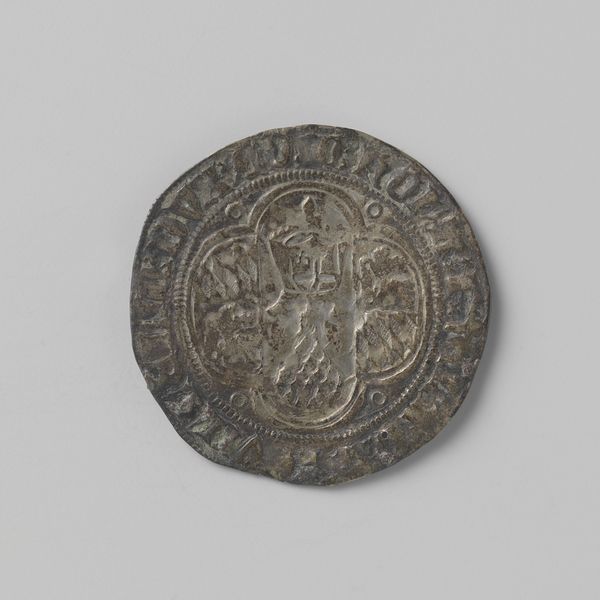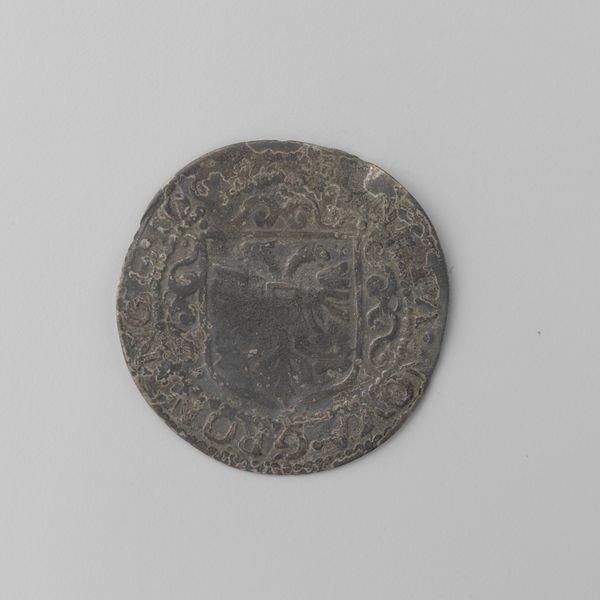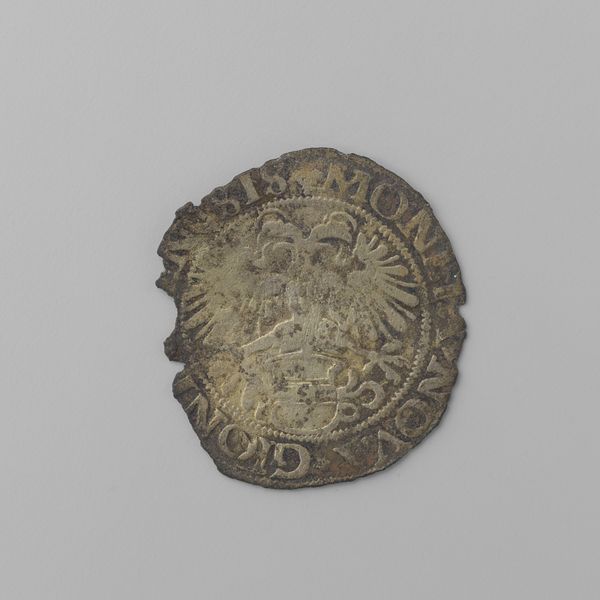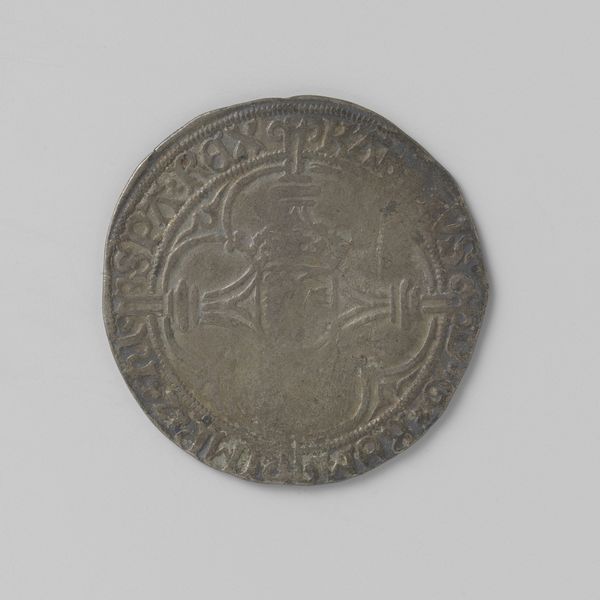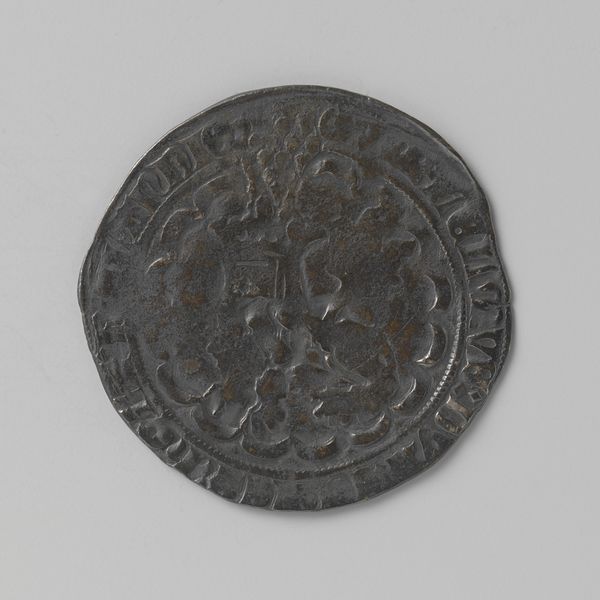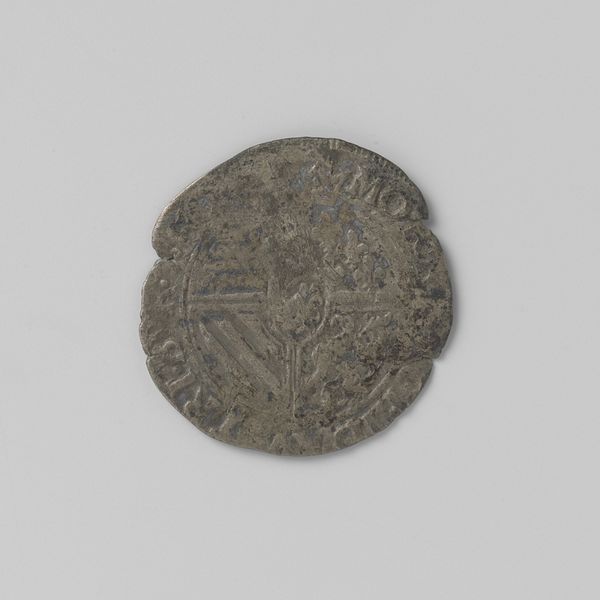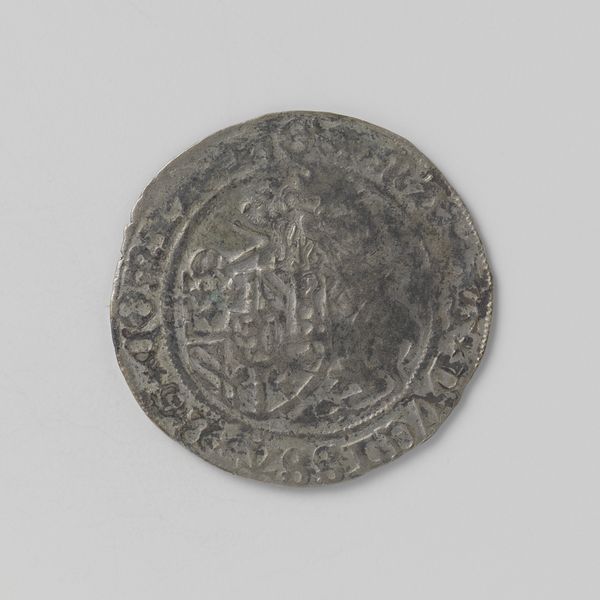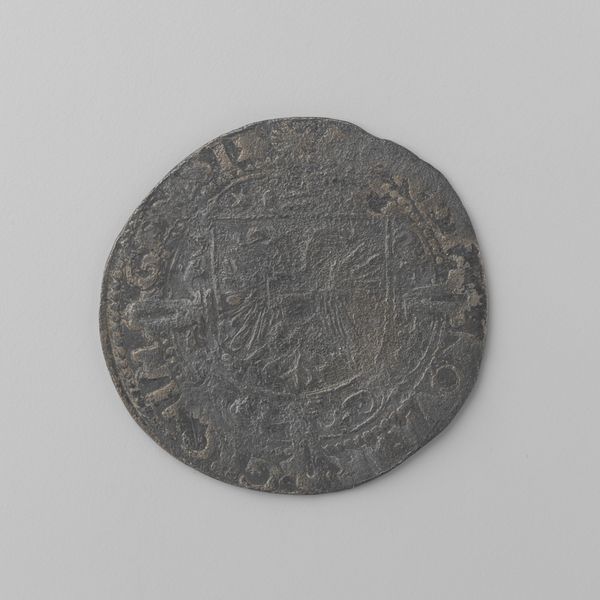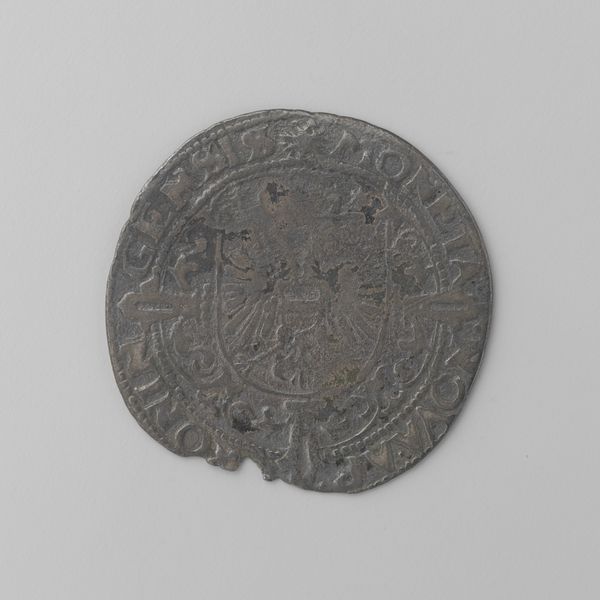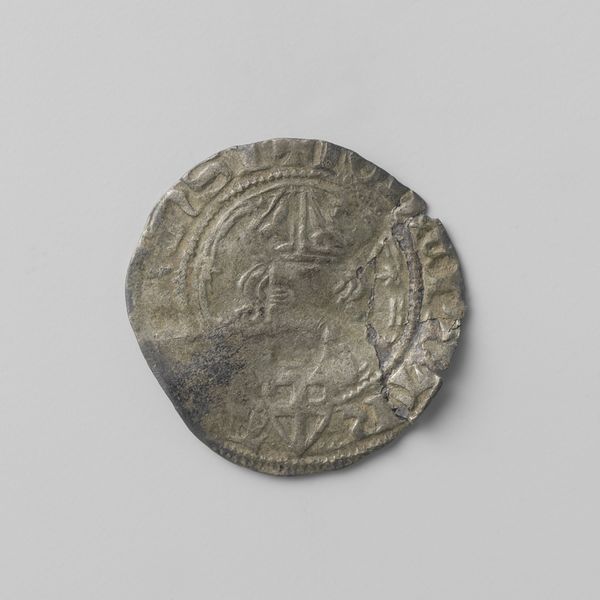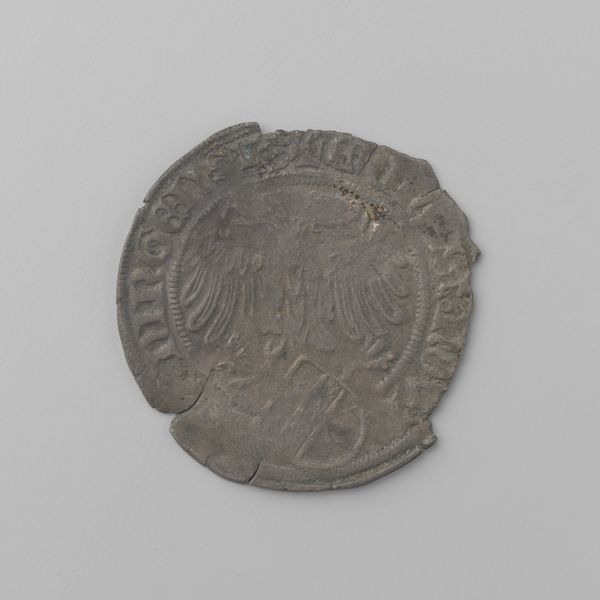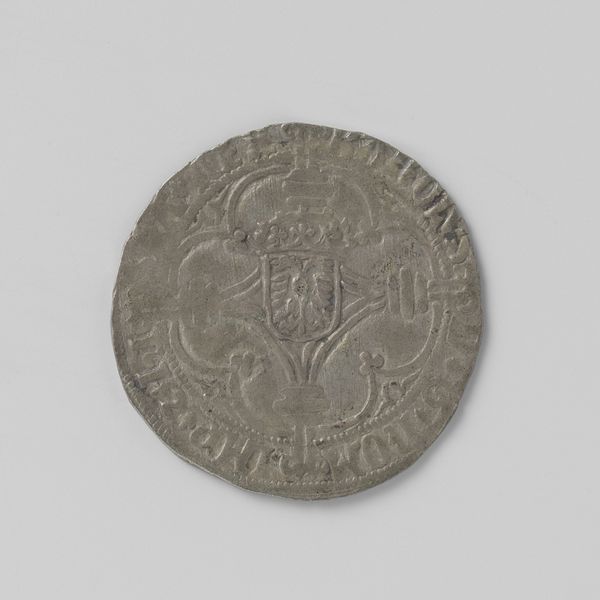
Hollandse dubbele groot vierlander van Philips de Goede, 1428-1467 1434 - 1467
0:00
0:00
metal
#
medieval
#
metal
Dimensions: diameter 3.0 cm, weight 3.15 gr
Copyright: Rijks Museum: Open Domain
This silver "Hollandse dubbele groot vierlander" was minted between 1428 and 1467, under the authority of Philip the Good, Duke of Burgundy. Coins like this offer a glimpse into the intersection of power, identity, and artistic expression in the late medieval period. As a ruler, Philip used coinage to broadcast his authority and influence across his territories. But this coin also speaks to broader cultural and economic shifts. The intricate designs and heraldic symbols reflect a society steeped in tradition and aristocratic values, while the use of silver as a medium underscores the importance of trade and commerce in the Duchy of Burgundy. Consider how the coin might have been experienced by people from different social strata. For a wealthy merchant, it represented a store of value and a means of exchange. But for a peasant, it may have been a rare sight, symbolizing the distant and often inaccessible power of the ruling elite. As such, this small coin encapsulates a world of social and political meaning.
Comments
No comments
Be the first to comment and join the conversation on the ultimate creative platform.
